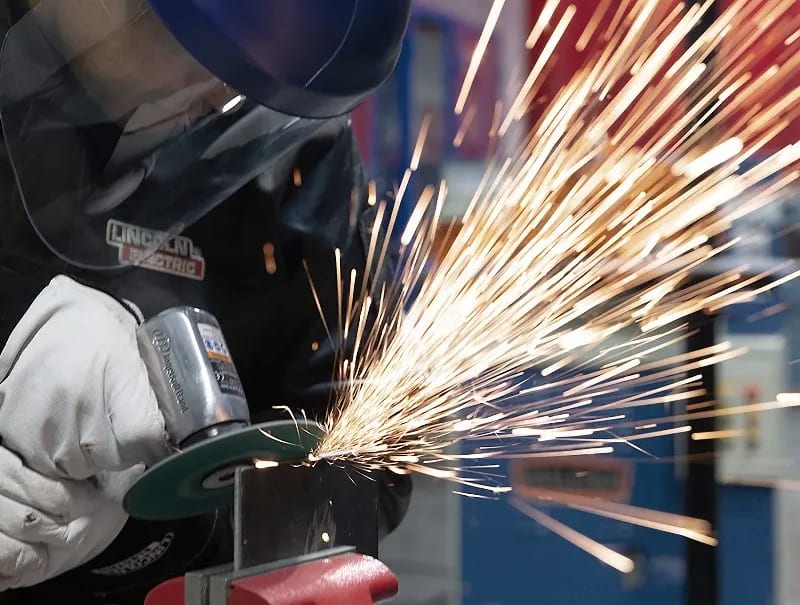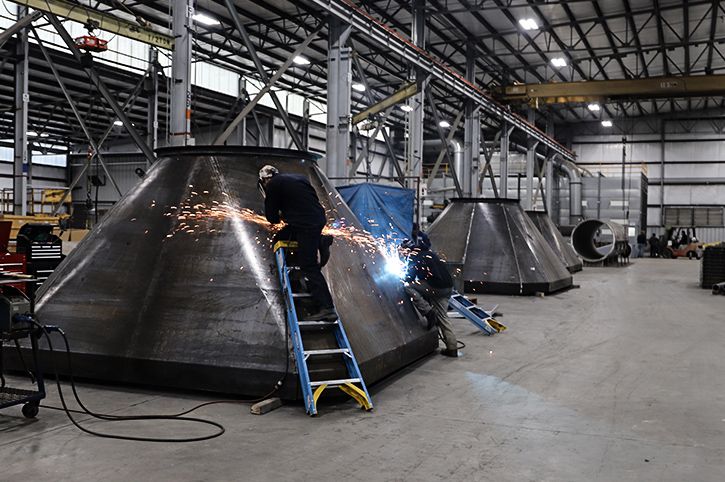All Concerning Welding: Secret Insights Into Techniques and Ideal Practices for Success
Welding incorporates a variety of strategies, each matched for particular products and applications. Understanding these methods, such as GMAW, SMAW, and TIG, is essential for accomplishing perfect outcomes. The right tools and security methods can not be forgotten. As preparation and repairing play critical functions in the welding process, grasping these aspects can greatly boost the quality of the end product. What are the essential variables that assure a successful weld?
Understanding Different Welding Methods
Welding techniques encompass a range of methods, each suited to particular applications and products. Among one of the most usual techniques are Gas Metal Arc Welding (GMAW), Shielded Metal Arc Welding (SMAW), and Tungsten Inert Gas Welding (TIG) GMAW, likewise called MIG welding, is preferred for its rate and flexibility, making it excellent for thin materials. SMAW, or stick welding, is favored for its simplicity and efficiency in outside atmospheres, especially with thicker metals. TIG welding uses accuracy and control, making it appropriate for detailed job and non-ferrous steels (Montana Mobile Welding and Repair Belgrade Welding). Each method has its special benefits and considerations, permitting welders to select the finest technique based on the task's needs, product kind, and preferred results. Understanding these techniques is important for successful welding
Crucial Welding Devices and Tools
While various welding methods require details skills, the ideal equipment and devices are similarly essential for attaining high quality results. Crucial welding tools includes welding equipments, which differ depending upon the technique-- such as MIG, TIG, or stick welding. Safety gear, including handwear covers, safety helmets, and aprons, warranties safety and convenience during the process. Furthermore, clamps and fixtures assist protect products in position, making sure precision in welds. Consumables like welding rods, cord, and shielding gas are additionally critical parts that influence the high quality of the weld. In addition, tools such as grinders and cutters assist in surface prep work and post-weld ending up, adding to a professional result. Purchasing top quality devices ultimately enhances the efficiency and efficiency of welding tasks.
Safety And Security Practices in Welding
Appropriate security methods are vital in the welding sector to shield employees from potential hazards. Welders have to use proper personal protective equipment (PPE), including safety helmets with appropriate shading, gloves, and flame-resistant clothing. Appropriate ventilation is vital to decrease exposure to hazardous fumes and gases created throughout the welding procedure. In addition, employees must be learnt the appropriate handling of welding devices to protect against accidents. Fire safety measures, such as maintaining combustible products away from the welding area and having fire extinguishers conveniently available, are required. Routine assessments of devices and offices can aid recognize prospective threats before they bring about mishaps. By sticking to these security practices, welders can develop a safer working setting and lessen dangers related to their trade.
Readying Products for Welding
Preparing products for welding is an essential action that considerably influences the top quality and stability of the end product (Montana Mobile Welding and Repair Welding). Correct preparation entails cleaning up the surfaces to remove pollutants such as corrosion, oil, and dust, which can jeopardize the weld. Strategies such as grinding, sanding, or using solvents are commonly used to accomplish a tidy surface area. Additionally, ensuring that the materials fit together well is crucial; gaps can result in weak welds. It's likewise crucial to think about the placement and positioning of the parts, as this will affect the simplicity of welding and the last result. Ultimately, picking the suitable filler material and making sure compatibility with the base metals is important for accomplishing solid, sturdy welds
Tips for Achieving High-Quality Welds
Achieving high-quality welds calls for focus to information and adherence to best practices throughout the welding procedure. Appropriate joint preparation is necessary, making certain surfaces are clean and free from contaminants. Selecting the ideal filler product and welding method based upon the base metals is crucial for optimal bonding. Keeping regular travel rate and angle while welding can stop flaws and promote harmony. Furthermore, controlling warm input is essential; too much warm can bring about warping and weakened joints. If necessary, regularly evaluating the welds during the process permits for prompt modifications. Employing proper post-weld therapies, such as cleansing and stress relief, can improve the toughness and integrity of the weld, ultimately making certain an effective result.
Troubleshooting Common Welding Issues
Welding typically offers obstacles that can impact the quality and honesty of the end product. Typical concerns such as porosity, inconsistent weld beads, and overheating can develop, each requiring particular troubleshooting techniques. Recognizing these troubles is necessary for welders to boost their abilities and accomplish excellent outcomes.
Porosity Issues Described
Although porosity can often be forgotten, it stays an essential problem in welding that can endanger the honesty of a finished product. Porosity describes the existence of small gas pockets within the weld bead, which can website weaken the joint and lead to premature failure. This problem usually occurs from contaminants, wetness, or improper securing gas protection during the welding procedure. To reduce porosity, welders ought to validate that the base products are tidy and completely dry, make use of appropriate shielding gases, and keep consistent welding parameters. Consistently evaluating the devices and atmosphere can also assist identify prospective problems before they show up in the weld. Resolving porosity properly is necessary for achieving strong, durable welds that fulfill quality standards.

Irregular Weld Beans
Inconsistent weld beads can significantly impact the top quality and stamina of a completed product. Various factors contribute to this concern, consisting of incorrect traveling rate, wrong amperage setups, and inconsistent electrode angles. When the welder relocates too promptly, a grain may appear slim and lack infiltration, while moving as well gradually can trigger extreme accumulation. In addition, using the wrong amperage can result in either undercutting or extreme spatter, both of which concession weld stability. The welder's technique, such as irregular lantern activity, can likewise lead to irregular grain appearance. To reduce these issues, welders ought to concentrate on maintaining stable, regulated motions and guaranteeing proper tools settings to attain harmony in their welds. Uniformity is essential to achieving reputable and strong welds.
Getting Too Hot and Warping Issues
Extreme heat throughout the welding process can cause considerable getting too hot and warping concerns, impacting the structural honesty of the work surface. These issues usually manifest as distortion, which can endanger alignment and fit-up, making further assembly testing. Variables adding to overheating include the selection of welding specifications, such as voltage and travel speed, as well as the kind of material being bonded. To minimize these concerns, welders need to maintain constant travel speed and ideal warm input while monitoring the workpiece temperature. Additionally, preheating or post-weld heat treatment can help relieve anxieties caused by fast cooling - Montana Mobile Welding and Repair. Routine examination and adherence to best techniques are crucial in preventing overheating and ensuring the long life and integrity of bonded frameworks
Regularly Asked Inquiries
What Are the Occupation Opportunities in the Welding Market?
The welding industry supplies diverse occupation chances, consisting of placements as welders, educators, assessors, and engineers. Experts can operate in manufacturing, building and construction, aerospace, and vehicle sectors, gaining from solid need and competitive wages in various roles.
Just How Can I Enhance My Welding Rate Without Giving Up Top Quality?
To enhance welding rate without compromising quality, one ought to practice efficient methods, keep equipment, maximize setups, and improve hand-eye coordination. Normal training and looking for responses can additionally considerably add to attaining much faster, high-quality welds.
What Certifications Are Available for Welders?
Many accreditations exist for welders, including those from the American Welding Society (AWS), the National Facility for Construction Education And Learning and Study (NCCER), and various industry-specific organizations. These credentials enhance employability and demonstrate ability proficiency.
How Does Welding Influence the Characteristics of Metals?
Welding affects the buildings of metals by altering their microstructure, which can bring about adjustments in toughness, ductility, and hardness. Warmth input and cooling rates during the procedure considerably influence these product features.
Can I Bonded Dissimilar Metals Together?
